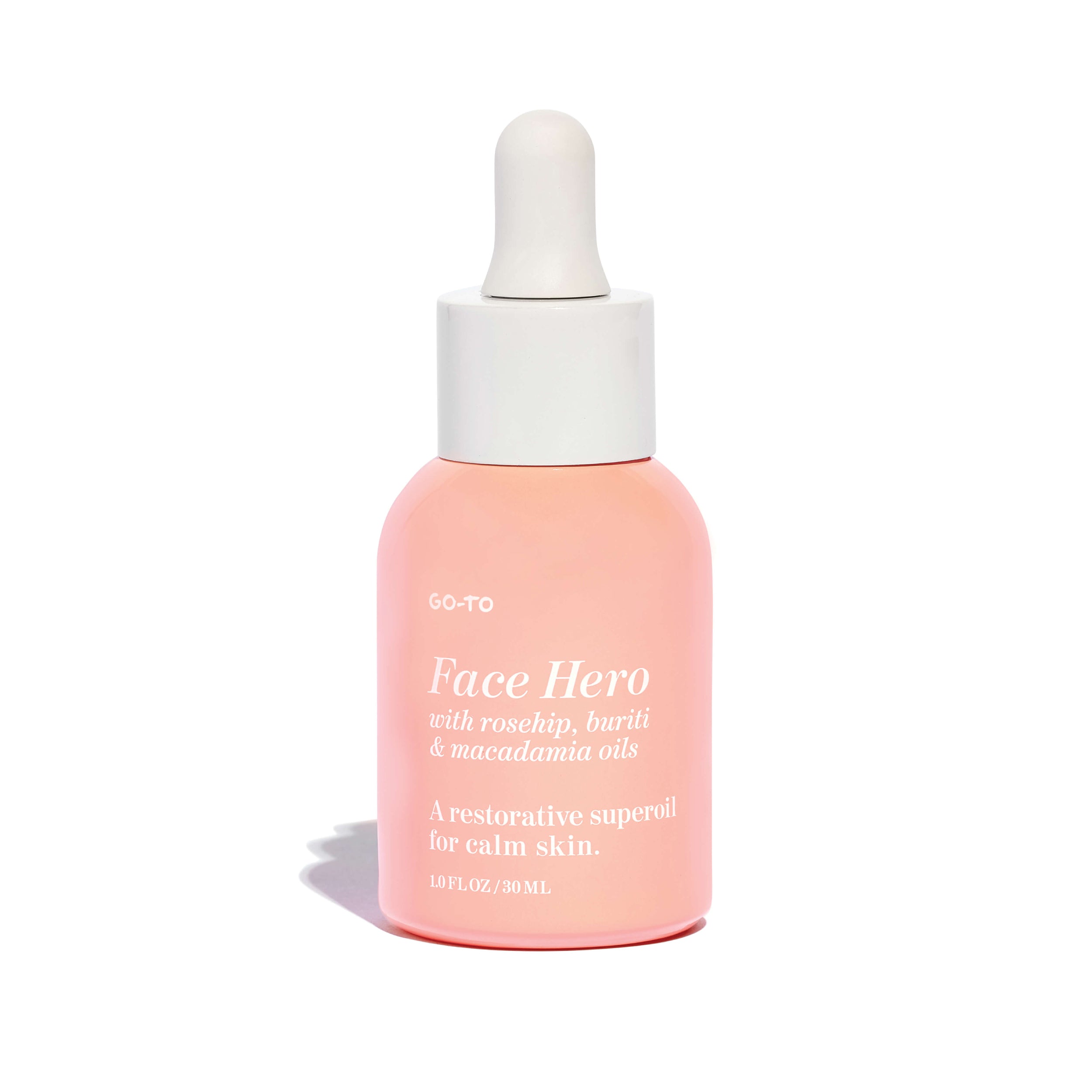YOU DID WHAT?!
Oh, you poor, sweet goose.
It’s okay. You’re not the first person to go too hard with actives and exfoliants and end up with dry, flaky skin, and a pissed-off moisture barrier. Many glow-monsters have come before you (like me! Hi!) and made the same foolish mistake. And now, like them, you’ve got to make it up to your face. Fast. Because that moisture barrier you just pissed off? It’s kiiiind of a big deal.
Dermal Therapist and skin expert Yadira Cauchi explains, “The skin barrier is a term used to describe the top layer of skin. Most references to the skin barrier focus on the very top layer of the epidermis – the stratum corneum.”
“The skin barrier is responsible for keeping the good stuff in and the bad stuff out. It protects us from physical toxins (harmful chemicals, pollution etc…) and UV radiation from sun exposure. The skin barrier also helps the body hold onto natural moisture by preventing transepidermal water loss.”
Basically, a healthy, strong moisture barrier will keep you protected and keep water firmly locked in your skin.
But a damaged one? Can't do any of that. What it can (and will) do is punish you with congestion, dryness, flaking, sensitivity, and an uncomfortable tight feeling.
Here’s how your moisture barrier gets damaged in the first place:
An enormously common way to upset your moisture barrier is with incorrect use of chemical retinoids or exfoliating acids. But that’s not the only way to do it.
“Most barrier damage comes from stripping your skin of its natural oils,” notes Yadira, explaining that a few different ways this can happen is with acne medication, harsh cleansers, overusing exfoliating acids/retinoids, and scrubbing too hard is also common as is using homemade DIY recipes like baking soda, lemon (TikTok famous!) on your skin.”
Additionally, internal factors (such as stress or hormones) can impact and ultimately weaken your moisture barrier.
But what about breakouts:
While the usual suspects of a pissed-off moisture barrier tend to be redness, flakiness, increased sensitivity and itchiness, it can also cause breakouts.
Why? Because a compromised skin barrier is more vulnerable to bacteria, and your skin’s dehydration causes the oil glands to overcompensate and produce excess oil—creating the perfect skin storm for acne.
If you are struggling with stubborn breakouts and a damaged moisture barrier, it’s best to halt all actives and keep your skincare routine simple. That way you can give your skin the best chance to heal.
When it comes to breakouts and your skin barrier, it’s a bit of a chicken-egg scenario. Is your damaged skin barrier causing breakout or are those acne-targeting treatments compromising your skin barrier? We went ahead and made sure our blemish-controlling treatment would be ridiculously respectful to your skin barrier. So you can soothe and support your breakouts without infuriating your poor skin
Here’s how you fix a damaged moisture barrier:
First things first, put the potent stuff on the bench for the time-being. “I generally tell my clients to avoid active ingredients such as retinoids, exfoliating acids, and even vitamin c for at least three-four weeks,” says Yadira, explaining that the healing time will be different for everyone. “Which I know may seem like an eternity but depending on the severity that is how long it can take. Plus, if someone continues using the wrong skin care you will do more damage.”
Just because you can’t use your actives at the moment doesn’t mean you can’t use any skincare at all, however. Keeping your skin well-hydrated and incorporating some soothing ingredients into your routine is key while you’re in the recovery stage, Yadira tells us, going on to recommend ingredients such as “vitamin b5 (panthenol), niacinamide, allantoin, ceramides, glycerin, squalane oil, beta glucan, and hyaluronic acid - Hello @ The Repair Shop! I also personally love and recommend La Roche Posay Cicaplast Baume B5 as a balm at night too – it leaves a white cast so it’s not for everyone during the day.”
Here’s how you can tell your skin has recovered:
The recovery time to repair a damaged moisture barrier will be different for everyone, and determined by your skin type, and how much damage was done in the first place.
“[The process] can take anywhere between 2 weeks to an entire month, and sometimes more,” Yadira says.As for how you can be sure all this extra TLC has worked and your skin is back in tip-top shape? “You will be able to tell when your barrier is healed/repaired when your skin is feeling less irritated/sensitive. It’s not reactive/dehydrated or even dry. If your inflammation has decreased you’re on the right path,” Yadira explains.
Skin still feeling too dry, or have itchy, irritated skin that’s lingering? Yadira advises keeping things extraordinarily simple and gentle in your routine, to have a good look at your products, and identify what’s to blame. If in doubt, reach out to a trusted skin specialist to help guide you with more personalised advice.
Here’s how you stop it from happening again:
So, you’ve rescued your skin barrier, now it’s time to celebrate (margaritas tomorrow night?), and then strengthen it.
“It’s possible to strengthen/repair your skin barrier’s function by including ceramides, antioxidants, and humectants like hyaluronic acid in your skincare,” Yadira explains. “Having a simple routine (that is right for you) and doesn’t strip the skin is key to a strong and healthy skin barrier. As is wearing a daily SPF.”
Once you’re confident your skin has calmed down, you can also begin to gradually add the actives back into your routine. And we do mean gradually. The last thing you want to do is overcook your routine again so go slow and monitor your skin closely to avoid repeating past mistakes.
Here’s how you thank us for this helpful advice:
Diamonds. Learjets. Superyachts. Dealer’s choice.
















Comments